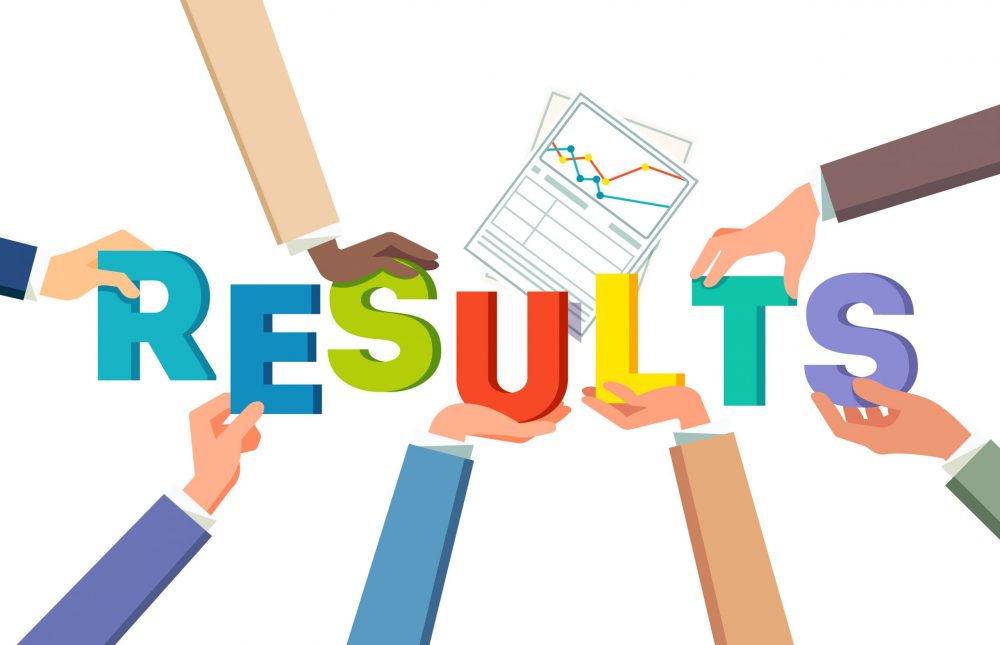Part I: Socialisms on a Spectrum
“Democratic socialism is a democracy in which the people control the economy and government, no group dominates any other, and every citizen is free, equal, and included.” (Gary Dorrien, Social Democracy in the Making, 1)
Thus writes seminary professor Gary Dorrien in his new monograph by Yale University Press, Social Democracy in the Making (2019). When I first came across this definition I couldn’t help but be struck with wonder: “Wait, this almost sounds like my view as a Christian libertarian-anarchist! Am I missing something?” Having been misrepresented by countless others for my views, I know I shouldn’t do the same for others.
So we have to set aside our prejudices for a moment and critically ask, just what is democratic-socialism? Is it something anyone should be worried about? Is it a passing fad that can ignored? This short series will explore the meaning and implications of democratic socialism(s) in hopes of more fruitful public dialog and mutual understanding – and do so with some of the best (not the worst) sources available to us.
“Socialism” of the…Generic Type
Socialism. The idea that the economy’ resources should be used in the interests of all its citizens, rather than allowing private owners of material resources, such as land and capital, to use them as they see fit. A social economy requires voluntary cooperation and central planning. This is formulated as the principle ‘from everyone according to their skill, to everyone according to their work’. The idea was implemented in the USSR and allied countries between the 1930s and the 1990s, when it was abandoned in favour of a market economy, primarily because the lack of individual incentives, among other factors, having gradually led these countries to economic collapse. (Oxford Dictionary of Economics, 483-84)
As one can see from this short definition in The Oxford Dictionary of Economics, “Socialism” tends to refer to the political ownership and/or control of businesses (the “means of production”) and the centralized, collective distribution of the resources extracted from those producers. The purpose of such collective (re)distribution is often some theoretical ideal of asset “equality” or “justice.”
This purpose introduces a crucial distinction in our discussion right off the bat: it’s the difference between embodied socialist practice and proposed socialist theory. The concrete embodiment of socialist ideals need not necessarily terminate in a certain political organization. Yes, it is (a) only inevitable that embryonic forms get mixed in with the ideals (because it’s difficult to just think abstractly), and (b), historically, there is a pattern of what it really looks like (more on this later). But, this distinction is important to underscore, nevertheless.
A slightly expanded version of Dorrien’s summary can be found in the 1962 Socialist International gathering in Oslo Norway, which clues us into what exactly the goals are:
“We democratic Socialists proclaim our conviction that the ultimate aim of political activity is the fullest development of every human personality, that liberty and democratic self-government are precious rights which must not be surrendered; that every individual is entitled to equal status, consideration and opportunity; that discrimination on grounds of race, color, nationality, creed or sex, must be opposed; that the community must ensure that material resources are used for the common good rather than the enrichment of the few; above all, that freedom and equality and prosperity are not alternatives between which the people must choose but ideals which can be achieved and enjoyed together.”
It is important to note that prior to this event, as early as the 1830s, Christian ministers and thinkers were already brewing up their own version of modern socialism in Europe. For example, in Great Britain, Frederick Denison Maurice (with Charles Kingsley and John Ludlow) argued that “There is a divine moral order, cooperation is the moral law of the universe, and socialism embodies the divine order by creating a cooperative society” (Dorrien, 5). The goals, again, were pretty broad and generic: minimal social and political domination, distributed/shared resources to help those who need it most, cooperative communities, and an ethos of care. “Social justice,” if you will. It doesn’t take much thought to see how all this connects to the Jesus of the Gospels. And for these Anglicans, drawing the connection from Christian thought and practice to socialism was quite natural.
But they never could quite agree on how this vision should be enacted. The real concrete embodiment of “socialism” remained somewhat empty. Would it involve the state, or not? Representative democracy? The use of any force? Some said yes, others no, to each of these.
Democratic vs. Totalitarian/Statist Socialisms
But eventually, after many decades of debate and experimentation, the “yes” answer came to dominate mainstream British politics – terminating in the establishment of the British Labour Party of 1918. The political party (still today) boast all the high goals of progressive economics (historians call it “Fabian collectivism”): “full employment,” “living wage,” “common ownership of industry,” and of course, the classic Marxist doctrine of progressive taxation. (What a difference this was to Dorothy Day’s “Christian anarchism” of the same period, which shunned all such political moves.)
At any rate, “democratic socialism” in this context, then, centered on political power and authority. The means of enacting socialist ideals was straightforward: vote for someone who will simply pass a law the requires everything to happen. Not enough wages? Pass a law that makes higher wages mandatory. Bad working conditions? Pass a law that makes them illegal. People on streets without food? Pass a law giving out food stamps. Etc. Supposedly, these representative democracies were proof that the people had consented, and that the masses really controlled the government to the benefit of all.
Then entered a further cleavage between social bodies: the distinction between democratic socialisms (Holland/Netherlands, Germany, Great Britain) and statist totalitarian socialisms (e.g., Nazi Germany, Stalinist Russia, etc.). The masses of people, it was thought, can’t possibly control the political apparatus effectively. We need smart administrators and boards with all the power to handle it. Thus entered a fresh era of statism (cf. movements in French revolution a century prior) – which existed side-by-side with democratic socialism.
The nanny-state sort of bumbled through the twentieth century (failed “wars against poverty,” native reservations, “public works,” laws against everything from beer to marijuana, etc.), but got by. Meanwhile, her abusive alcoholic brother, the totalitarian-state, crashed and vomited everywhere, from Cambodia to Poland to Russia. Some saw this development as proof that “democratic” and not totalitarian socialism “worked,” a subject we’ll take up in Part III.
But, whether there was a democracy or not, socialism’s ideals virtually always came to use the traditional political apparatus (the “government”). And there has rarely been purely socialist or purely non-socialist countries in history. Most modern nation-states today are socialist in some sectors and not in other sectors, or socialist in some sectors/industries in lower or higher degrees. In the U.S., for example, the utilities and electricity industry is highly socialized. In other countries, like in much of Europe and Canada, the medical and health-care industry is heavily socialized.
Why “Socialism” is Usually not a Binary Category
What does this mean? It means contemporary “socialism” exists on a spectrum. The more socialized a country is, the more “public property” exists. The less socialized a country, the less “public property” exists. The more control the state has over businesses and their productive and distributive capacities, the more “socialist” it is. The less control the state has over businesses and their productive and distributive capacities, the less “socialist” it is. All governments are therefore inherently socialist on a basic level. No government operates for free (i.e. there are not governments with a 0% spending metric in the table below). If a government collects taxes (which then redistributes such wealth), it is ipso facto socialist.
There are many metrics one can use to assess the “degree of socialism” in current political arrangements. This includes the amount of government spending as a percentage of GDP, the number of public employees in relation to the total population, and government employment as a percentage of total employment:

So when is it justified to say an economy is “socialist”?
Again, it’s all relative because the term means different things on different planes – all on a spectrum. But there remains, however, a semantic context. In my view, the word-pair could be legitimately labeled for (democratic) nation-states that seek a strong presence of political involvement—whether integrated or separate from private markets. This is particularly true if those countries are approaching or exceeding 50% government spending as percentage of GDP and/or when government workers approach or exceed one for every ten non-government workers.
How does socialism differ from “distributism”? And are democratic socialists simply wrong to question private power, and libertarians simply right to question public power? And what about the “democracy” in “democratic-socialism”? How does this change things? Is it good or bad? We’ll take all this up in Part II.
Part II: Distributism and Crony-Capitalism
In Part I, we looked at how “socialism” can mean different things to different people. In principle, there is some distance between the theory and the practice of socialism. And when it is practiced within the nation-state arrangement, it exists both in democratic and totalitarian forms – as well on a spectrum. In all cases, nevertheless, the state is viewed as the nanny of society. The government is the instrument by which all social justice is to be achieved. This is true for mild to moderate forms of democratic socialism (Brent Waters in Just Capitalism) to more aggressive and explicit forms (e.g., feel the Bern?). The nanny of some are just more entitled, rude, and controlling than others.
In this part, we’ll look at a concept that overlaps democratic socialism but should not be conflated with it: distributism. We will also discuss how crony-capitalism (private concentrations of power with government help) is a bigger problem than even many libertarians think, and why that is significant. We’ll learn how Christian anarchist/anarcho-capitalist variants of libertarianism and some democratic socialist ideas behind distributism are sympathetic to one another, and not at opposite ends of the spectrum. We’ll also learn what it is that does sharply divide these two general perspectives.
Distributism
“Distributism” refers to the general economic practice of pooling together resources and then distributing them. It happens for different reasons, some functional, some ethical (more on this below). In any case, the general practice occurs in almost every church, business, family, community, and other spheres of society.
For example, when a church committee decides where money from the general fund should go, it is performing distributism. Or, when Moses allotted the promised land into twelve areas for twelve tribes, this was a form of land distribution. Businesses like Walmart practice internal distributism, pooling their revenues from all income streams and (re)distributes them to employees (wages), investment projects, research and development, share-holders, and other ends.
Distributism can also involve distribution of not just resources, but power. Cooperatives (or “coops” for short), for example, are a form of both power and resource distributism because the employees are the owners. Similarly (although different), share-holders of public corporations may have voting rights over who gets elected to the company board.
One can already see how many of the legitimate goals of democratic socialism—such as shared ownership, special allocation of resources, participation from the ground-up, decentralized power, and protection of the rights of all involved—can easily be accomplished through private, voluntary means, at least on a smaller scale.
One might therefore ask: Could this model expand to larger scales?
In some sense, it already has – but in the opposite way in which most democratic-socialists envision: through private innovation. ACE hardware is a coop (a “big corporation”) with over 80,000 employees. Many home-owner associations in the U.S. have thousands of members – and no municipal government. Royal Caribbean and large companies like Samsung and Google all implement their own rights-protection agencies (police) and arbitration services (courts/dispute settlement). In other words, there isn’t necessarily a limit to the size in which voluntary societies and cooperative type arrangements can grow.
Are these models more desirable than current political arrangements? I think so. To the extent that they are, this area indicates some of the potential cross-fertilization between Christian-anarchist and democratic socialist ideas – and common ground for public dialog. (So the major question at that point is: will democratic socialists stick to the best of their ideals and vision more than their loyalty to traditional politics?)
How, then, is Distributism Different From Socialism?
The primary difference between socialism and distributism is that distributism need not be coercive.
This difference is difficult to overstate. Some employers or elected boards intimidate, threaten, and abuse others, yes. But this is generally exceptional. Cops rarely patrol the isles on Sunday morning to ensure everyone is giving a portion of their income and threaten those who are not giving it. Walmart can fire employees, but cannot force them (or anyone else) to buy their products at the threat of imprisonment or the electric chair. Local cooperatives cannot force anyone to buy their produce. So then it is crude, but nevertheless accurate, to say that socialism, at least as it exists within the context of traditional political authority, is distributism backed by guns.
Another difference is that the group distributing resources in socialism is or is usually associated with the political apparatus of a nation or nation-state. Distributism, in contrast, need not have any connection with any overt political/state entity, as we witnessed in the examples above.
Historical Distributism and Crony-Capitalism (Private Power)
Dr. Alexander Salter with Eugene Callahan wrote a piece on distributism in The Christian Libertarian Review, and was recently interviewed about it on the Christian Libertarian Podcast. Salter notes that the early twentieth century theory of distributism was associated with Catholic thought, Henri de Lubac, and G. K. Chesterton. Key to their view was this: socialism and capitalism are two sides of the same coin. In both cases, most of society’s wealth and the means of production are controlled by a small group—whether public (socialism) or private (capitalism).
So the reason for distributism (over an against a raw free-market and a socialist society) is obvious: concentrations of power will always end bad. So the goal of distributism is to mitigate this danger from the start by some form of decentralized, recognized, and formalized ownership.
I don’t know about you, but I couldn’t agree more. Acton’s famous quote (“Power corrupts; absolute power corrupts absolutely”) didn’t just apply to mainstream politics. And again one notices that these values overlap with not only Christian anarchism, but explicitly with the democratic- socialism of many Christians – such as “Christian democracy” (Lew Daly) and “social capitalism” (van Kersbergen). For instance, Daly, in God’s Economy, 238, says,
Restricting the state is part of a larger mission of protecting the natural structures of society—families, churches, communities—from coercive, ‘monistic’ powers, whether public or private. This begins with a critique of the state, but that is not where it ends: other kinds of power, particularly the statelike powers of large corporations, high finance, and concentrated wealth, also pose a significant threat to the diverse God-given purposes of families, churches, and communities.
While I have some reservations about what is considered “natural structures of society” (I see the state as a temporary parasite in the history of our species), and I certainly don’t agree with Daly’s specific solutions, Daly, the distributists – and others like neo/post-Marxists who make precisely the same point – are on to something. Power may take the form of guns, armies, and drone bombers, but it certainly doesn’t stop there. And in today’s world of neoliberal neocapitalism – where many private companies, from the Fed to Monsanto, control those who run those guns, armies, and drones – it is not easy to brush aside these concentrations of power.
This is what French historian Michel Foucault meant when he famously said “we need to cut off the king’s head” (Discipline and Punish: The Rise of the Prison). That is, we need to stop pretending that all power comes down from the sovereign state. Power exists in all relationships. Of course, this can be overemphasized so that one might really believe that the menace of McDonalds is really a bigger threat to society than politicians in D.C. with a monopoly over nuclear warheads. Foucault says elsewhere:
I don’t believe there can be a society without relations of power. The problem is not of trying to dissolve them in the utopia of a perfectly transparent communication, but to give one’s self the rules of law, the techniques of management, and also the ethics, the ethos, the practice of self, which allow these games of power to be played with a minimum of domination. (Foucault, “The ethic of care for the self as a practice of freedom,” in The Final Foucault, 18)
This seems to have been a big goal of Jesus of Nazareth. It was also a concern of Gandalf the Grey: “It is the small everyday deeds of ordinary folk that keep the darkness at bay.”
But here, amidst this shared concern between some socialist theorists, neoMarxists, and Christian (distributist) anarchists like myself, there remains a sharp difference. The reality of sin and the need for a “minimum domination” is a reason against the state, not for it. Alas, one of the unquestionable dogmas of western civilization is that “Because humans are steeped in sin, we need the state” (Stapleford, Bulls, 31, 99). But wouldn’t critical reflection demand instead that “because humans are steeped in sin, we should interrogate and nullify the state—which is an overt concentration of power and a monopoly on coercion by definition”?
In any case, Michael Munger and Russ Roberts recently debated this subject of private/public power on Econtalk. Roberts was more optimistic about private power in free markets than Munger. I tend to think Munger was not only right about crony-capitalism, but maybe have understated his case. Cronyism was been around before 1776 (see Fearling, A Leap in the Dark). Even Thomas Jefferson was concerned: “I hope we shall crush… in its birth the aristocracy of our moneyed corporations, which dare already to challenge our government to a trial of strength and bid defiance to the laws of our country.”
Regardless, there is one more piece in this puzzle that we haven’t yet dealt with: the savior of democracy. Is democracy really a complement to “socialism,” or is it antagonistic to socialism? And is democratic socialism a friend of freedom, or not? After all, the promise of leading democratic-socialists is that people will have more freedom. This will all be addressed in Part III.
Part III: Democracy, Socialism, and Freedom
In the last part of this series, we looked at distributism and the concerns of both public and private concentrations of power. I asserted that (a) distributism is similar to socialism, but also different in that it is not inherently coercive and need not adopt the traditional political apparatus, (b) distributism can accomplish the legitimate goals of democratic socialists, probably more effectively, (c) private concentrations of power should be a concern for everyone, perhaps even as much as public concentrations of power (especially where private interests have captured public means), and (d) that if we are really concerned about power, as we all should be, we cannot let the state off the hook since it is a monopoly on the means of violence by definition.
Here we must deal with a topic that thus far has been ignored: the relationship between “socialism” and “democracy” in “democratic socialism.”
Putting the “Democracy” in “Democratic Socialism”
In short, “Democratic” socialism today is socialism that exhibits a democratic system of government within the traditional nation-state. Socialism without any input from the exploited masses is typically called a “command-economy,” “totalitarianism,” “fascism,” or (if one person is in charge) a “dictatorship.” With elections, however, the people have (in theory) some degree of influence on how the state carries out its monopoly on coercion and redistribution of resources. This input from the public is intentional, and (in theory) establishes the goal of “shared ownership” and “cooperation.” This is why the label “democratic socialism” is used: to distance one’s views (and rightly so) from authoritarian/hierarchical versions of socialist economies. Positions of power must be available for anyone to occupy.
However, the prefix “democratic” does not change the basic economic meaning and functionality of “socialism,” nor does it necessarily complement it.
Why “Democratic” in “Democratic-Socialism” is Not Peanut-Butter and Jelly
Contrary to mainstream rhetoric, “socialism” of nation-states tends to take away from the “democracy,” not complement it. This is because of the anti-democratic (hegemonic) nature of the modern state. For example, the choices of individuals are substantially curtailed/limited in daily life the more and more laws that are passed (e.g., what car one can drive, the choice of how and how much to pay employees, how to own and operate a business, what currencies can be used, etc.). Also, the bureaucracy required to carry out socialist ideals (which is often non-democratic) will often be larger than the masses can reasonably hold accountable.
Another issue is “freedom.” Does any variant of socialism lead to more freedom? Perhaps not. Milton Friedman famously argued in Capitalism and Freedom…
“the advocacy of ‘democratic socialism’ by many who condemn out of hand the restrictions on individual freedom imposed by ‘totalitarian socialism’ in Russia and who are persuaded that it is possible for a country to adopt the essential features of Russian economic arrangements and yet to ensure individual freedom through political arrangements…a society which is socialist cannot be also be democratic, in the sense of guaranteeing individual freedom….
I know of no example in time or place of a society that has been marked by a large measure of political freedom, and that has not also used something comparable to a free market to organize the bulk of economic activity.”
The argument is this: “free market” is generally synonymous with maximal freedom in the realm of economics. And because the economic sphere is interconnected with all other spheres of life, this freedom acts as a catalyst to other freedoms in life at large.
But, whether anyone likes it or not, Friedman’s conclusions here have basically been confirmed by the Heritage Foundation’s Index of Economic Freedom project (heritage.org), the Economic Freedom project of the Fraser Institute (fraserinstitute.org), and the Human Freedom Index of the Cato Institute (cato.org). Freer markets do mean freer societies.
In short, then, if the goal is to “empower the person” and establish freedom, then socialist governments appear not to be the best option. The contrast between “free” economies and “socialist” economies is for good reason: socialist economies lack freedom.
More Concerns With Democratic Socialism
As we learned in Part I, socialism usually exists on a spectrum. What this means is that the inherent problems of socialism apply to the extent that socialism is present.
So for example, Von Mises in his tome Socialism pointed out the economic “calculation problem.” When resources are extracted from people by force and then redistributed, there are a huge series of steps that each require measurement and calculation. But this can never happen efficiently precisely because they were extracted by force and distributed according to what the distributer believes or perceives is needed. There are no prices attached, so there is no means of calculating – except guesses. In larger economies with all kinds of economic controls, it’s an impossible task. It would be akin to somehow converting a computer chip into a network of hundreds of people with telephone cable and each person holding a button, all trying to press it at the right time, day after day…based on, well, intuition? “Policies and procedures”? Calculating and connecting supply and demand like this cannot work and inevitably leads to waste and shortages. So no matter how many twitter followers you may have, without prices, you’re flying blind.
Thus, the more socialist an economy is, the more waste and shortages. The less socialist an economy is, the less waste and shortages. The same principle applies to all countries – as long as a government is collecting taxes. Every dollar has to go somewhere, and that means judgments are made.
And the same principle applies to other aspects besides the calculation problem – such as the knowledge problem, and other things we don’t have time to get into that economists like Von Mises, Rothbard, and DiLorenzo have thoroughly covered.
Democratic Socialism: A Success? A Failure? Or Just an Outdated Drag?
What this means is that socialism cannot be said to be “successful” simply because it hasn’t terminated in mass starvation. Similarly, from our earlier discussion about democracy, socialism cannot be said to be successful politically simply because there hasn’t been a violent revolution or bill passed to build concentration camps – as wonderful as this is. All that can be said is that it exists in different ways and degrees, some less painful and catastrophic than others.
What certainly can’t be said is that the masses aren’t exploited.
This has always been confusing to me in the rhetoric of this discussion. Capitalists are said to exploit the masses (picking up cues from Marx’s analysis) – which in some sense may or may not be true (let’s keep this open and debatable for the sake of argument). But for some reason, democratic-socialists – especially of the moderate and mild kind – explicitly talk about using the “market” like “geese laying golden eggs” (Waters, Just Capitalism, 192). In this market-state or “market-socialism” model (which is just democratic socialism that openly recognizes the necessity of markets), the state exploits the population not just in practice (as it must) but according to principle. The geese who lay golden eggs (i.e., the wealth creating magic of capitalism) should be taxed, regulated, and worked as hard as possible for the common good…but not to the point where the geese actually keel over and die. This would be too much!
It doesn’t take long to realize that this “market-state” relationship hardly seems favorable in inaugurating an egalitarian ethos – especially when we realize that “the market” is nothing more than you and me. Just imagine slave owners in the 1800s saying, “We gotta work these slaves hard so we get enough cotton for the whole community…but not too hard. That would be unnecessary (and maybe even wrong!”)
The Christian anarchist and French sociologist Jacques Ellul was right on this count:
“It is possible to say, without paradox, that socialism takes the worst features of capitalism and carries them to extremes while justifying them theoretically. In socialist society individuals are doubtless freed from subordination to others, such as capitalists, but they remain entirely submitted to production: the economy is the basis of their lives. This is precisely the source of real alienation—not the subservience of being to personal having, but the subservience of being to doing and to collective having.” Money and Power (21)
Conclusion
There’s so much that we didn’t cover – such as what “capitalism” can mean and how it is also misunderstood. But we covered enough on this subject to where we can hopeful re-orient ourselves to better navigate a world of conflicting claims and terms regarding this confusing constellation of socio-economic concepts. What can be said in conclusion?
Well let’s just get to it: Should one worry about contemporary political democratic socialists like AOC and Bernie Sanders, and their bold proposals to hose the rich and bring sweet justice upon the land?
Maybe, maybe not. Politicians are politicians, and stupidity can be to everyone’s benefit as much as to everyone’s downfall. What’s clear for these two persons and their proposals in particular is that (a) neither are remotely familiar with even highly watered-down versions of basic economic principles (much less math), and (b) both understand “democratic socialism” not as decentralizing power and not as voluntary distributism, but as European-style welfare socialism.
That is, a big, greasy, overweight, cussing, smoking, diseased, plastic-faced, once-and-a-while-public-showering Nanny that beats your kids in the closet, threatens them with kidnapping if they tattle, beats the neighbors kids on their front yard, steals everyone’s stuff – even while the boss is home, lies about about all of it, and then ceaselessly demands a raise, instilling fear in all who somehow can’t imagine a world without the “necessary help” of this grotesque creature.
Just how concerning is this “progressive” state of affairs? Will it necessarily terminate in the Gulag? Well, it’s not necessary that it will, though governments never tend to get smaller – nor satiate their lust for control. But five things are for certain regarding contemporary political democratic socialist proposals: (1) it probably won’t help the parties it intends to help, (2) there will be significant economic and social waste, (3) it will empower the state – that is, AOC and Bernie themselves, (4) money will run out and people will protest in the streets demanding stuff they were promised, and (5) none of the essential problems of either government or society will be solved.
It’s been a century now, and we know that these are the results typical of the Nanny-State.
If AOC, Bernie, and others were genuine in even the most basic ideals and words behind the “democratic socialist” values they espouse, they would, at the very least, (1) refuse to even speak about anything related to economics without taking Economics 101, (2) verbally encourage voluntary distributism, and insist that the government stay out of it, and (3) live by example, and give the majority of their millions to the poor, one form or another. At least then we could begin to have a meaningful conversation.
But I’m not holding my breath.

), //libertarianchristians.com/wp-content/plugins/smartquizbuilder/includes/images/template6-latest.jpeg))

), https://libertarianchristians.com/wp-content/plugins/smartquizbuilder/includes/images/template6-latest.jpeg))


;?>/smartquizbuilder/includes/images/sqb-registration-img.jpg)

